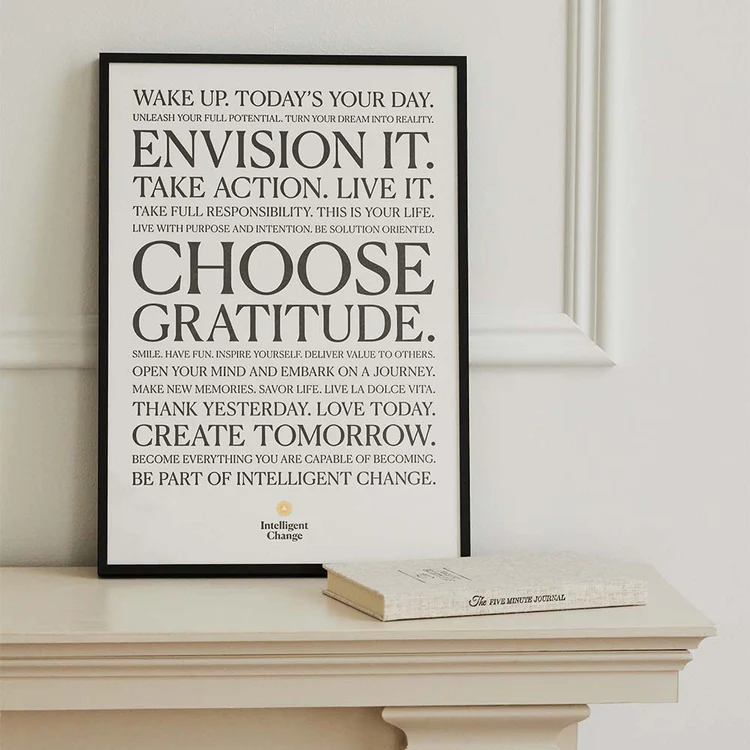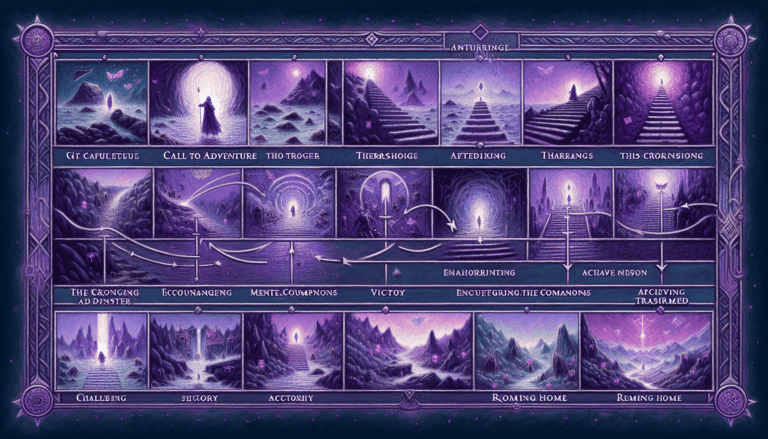My Introduction to The Five Minute Journal
You know that feeling when you’ve tried every productivity hack under the sun, but nothing quite sticks? That was me last summer. I’d heard about The Five Minute Journal countless times on productivity podcasts, but I’ll admit – I was skeptical. Another gratitude journal? Really? But after a particularly rough month where my mind felt scattered and my mood was all over the place, I decided to give it a shot. Little did I know this simple hardcover book would completely transform my morning routine!
The Science Behind The Practice
Before diving into my experience, let’s talk about why this journal actually works. The opening pages of the physical journal do a fantastic job explaining the research, but I did my own digging too. The whole concept is built on positive psychology research, particularly studies from Harvard and UC Davis that show how gratitude practices can significantly boost happiness and reduce anxiety.
What really caught my attention was the research about neuroplasticity – our brain’s ability to form new neural pathways. By consistently focusing on positive aspects of our lives first thing in the morning, we’re literally rewiring our brains to spot more positive things throughout the day. The journal cites studies showing that people who practice gratitude experience:
- Better sleep quality
- Increased optimism
- Stronger relationships
- Enhanced self-esteem
- Reduced symptoms of depression
The structured format isn’t random either. Each prompt is carefully designed to activate different parts of our brain associated with positive emotion, goal-setting, and personal growth. For instance, the morning gratitude practice triggers the production of dopamine and serotonin – our feel-good neurotransmitters.

Physical vs. Digital: Which Version Works Better?
Here’s where things get interesting – I actually tried both versions! The classic physical journal is this beautiful linen-bound book that feels substantial in your hands. There’s something almost ceremonial about opening it each morning. But the digital app? It’s surprisingly well-designed and offers some unique advantages.
The Physical Journal Experience
The traditional hardcover version has some distinct benefits:
- No screens first thing in the morning (huge plus for mental health!)
- The tactile experience helps cement the habit
- You can easily flip back through past entries
- The quotes and weekly challenges are right there on the pages
- It doubles as a beautiful desk accessory
- No battery or WiFi needed
The downsides? You can’t search through old entries easily, and you need to remember to carry it with you when traveling.
The Digital App Version
The app version (available for iOS and Android) brings some modern conveniences:
- Push notifications to remind you to journal
- The ability to add photos to entries
- Easy searching through past entries
- Cloud backup of all your journals
- Option to export your entries
- Built-in mood tracking
- Social sharing features (if that’s your thing)
The main drawback? It’s another app competing for your attention, and you’re starting your day with a screen.
What Makes The Five Minute Journal Different
Let me tell you, this isn’t your typical blank notebook with “Dear Diary” vibes. The folks at Intelligent Change really thought this through. The journal uses a research-backed format that takes literally five minutes to complete – three in the morning and two at night. What grabbed my attention was the simplicity of it all. No endless blank pages staring back at you!
The morning section asks three quick things:
- What you’re grateful for
- What would make today great
- Daily affirmations
And at night, you reflect on:
- Amazing things that happened today
- How you could have made today better
I especially love how they include an inspiring quote each day and weekly challenges that keep things interesting. The physical quality of the journal is impressive too – thick, cream-colored pages that don’t let ink bleed through and a built-in ribbon bookmark that’s actually useful.
The Real Impact on My Daily Life
Here’s where things get interesting. After about two weeks of consistent use, I started noticing subtle changes in how I approached my days. Remember those mornings when you wake up and immediately think about that overwhelming to-do list? Those started happening less frequently. Instead, I found myself naturally thinking about good things first thing in the morning.
The biggest surprise was how it affected my problem-solving abilities. By focusing on “what would make today great” each morning, I became more proactive rather than reactive. For instance, I started preparing for important meetings the night before instead of scrambling the same day. And those daily affirmations? I used to think they were cheesy, but they’ve become like a personal pep talk that actually works!
The Not-So-Great Parts
Look, I wouldn’t be honest if I didn’t mention the downsides. The biggest challenge I faced was remembering to do the evening reflection. There were nights when I’d crawl into bed and realize I’d forgotten to fill it out. And let’s talk about the price – it’s definitely more expensive than your typical journal. I also wish they had more space for the evening reflection section; sometimes I want to write more about my day than the allocated space allows.
Some might find the repetitive structure limiting. There were days when I wanted to write more freely or in a different format, but the template stays the same every day. That’s kind of the point for building habits, but it might not work for everyone’s journaling style.

Tips for Getting the Most Out of The Five Minute Journal
After three months of daily use, I’ve figured out some tricks that really help:
- Keep the journal on your nightstand with a good pen – seriously, this simple placement strategy increased my consistency by about 80%
- Set a morning alarm 5 minutes earlier than usual specifically for journaling
- Pair it with your evening routine, like right after brushing your teeth
- Don’t stress about perfect answers – quick, gut-response thoughts often work best
- Take photos of especially meaningful entries; they’re great to look back on during tough days
- Try both digital and physical versions for a week each – you might be surprised which one fits better into your lifestyle
- Read the science section in the beginning of the journal thoroughly – understanding the ‘why’ really helps with motivation
The Final Verdict
Is The Five Minute Journal worth it? For me, absolutely yes. While it’s not a magical solution to all of life’s problems, it’s become a valuable tool in my daily routine. The structured approach to gratitude and goal-setting has helped me maintain a more positive mindset and stay focused on what truly matters.
Think of it as a tiny daily investment in your mental well-being. Sure, you could recreate the format in a regular notebook, but there’s something special about having a dedicated, well-designed journal that makes you want to use it consistently.
What I’ve learned is that the real value isn’t in the physical journal itself – it’s in the habit it helps you build. Those few minutes of reflection each day add up to something pretty remarkable over time. Whether you choose the physical or digital version really comes down to personal preference – both are excellent tools for building a solid gratitude practice.
Have you tried The Five Minute Journal or similar gratitude practices? I’d love to hear about your experiences in the comments below. And remember, the best journal is the one you’ll actually use consistently!





